Understanding the Foundations of Behavioral Support
Behavioral Intervention Plans (BIPs) are essential tools designed to help children with behavioral challenges succeed academically and socially. Recognizing your child's behavioral needs and understanding the components of a BIP can significantly impact their learning journey. This article explores the purpose, development, legal considerations, and your vital role in implementing effective behavioral strategies.
What is a Behavior Intervention Plan and Why It Matters
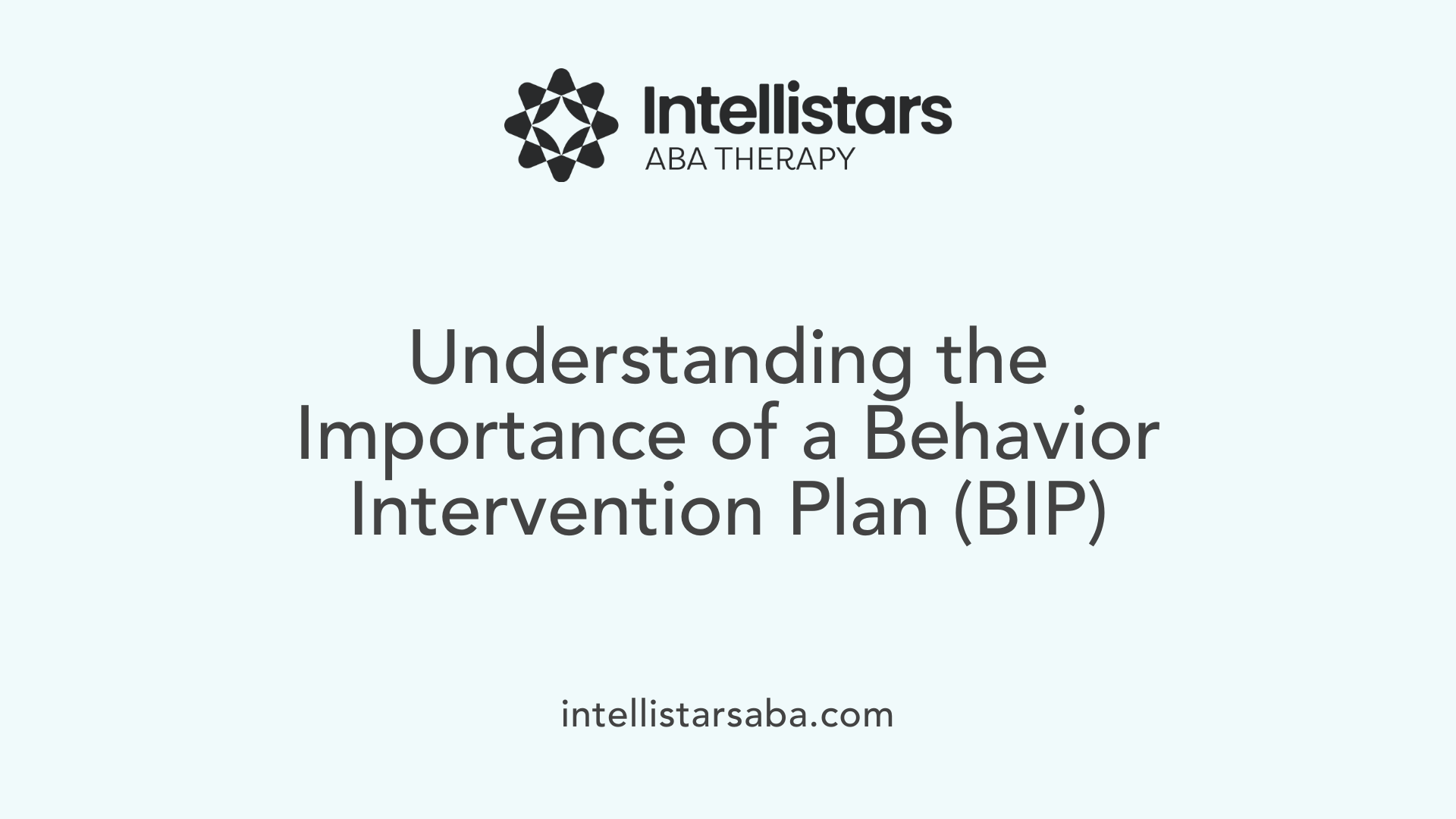
What is a Behavior Intervention Plan?
A Behavior Intervention Plan (BIP) is a structured, written document developed to help children who display behaviors that interfere with their learning or safety in school. It specifically targets problematic behaviors by outlining strategies that promote positive behaviors and diminish negative ones. The plan is individualized, based on a detailed assessment called a Functional Behavioral Assessment (FBA), which explores why a child behaves in certain ways.
The BIP typically includes a description of the problematic behaviors, the reasons or functions behind these behaviors, and tailored strategies for prevention and intervention. Its goal is to equip teachers, parents, and school staff with consistent approaches to support the child's growth and success.
Purpose of a BIP
The main aim of a BIP is to promote a child's positive development by teaching new, acceptable behaviors and reducing maladaptive ones. It works on the principle of strengthening the child's ability to meet their needs in healthier ways. When children use behaviors as communication—such as seeking attention, escaping difficult tasks, or getting access to preferred items—the BIP helps identify those underlying needs.
Through proactive support, the plan helps prevent problem behaviors before they happen, while reactive strategies guide responses when behaviors occur. This combination fosters a safe, supportive learning environment, increases engagement, and helps children develop essential skills.
When a Child is Eligible for a BIP
Any child whose problem behaviors impact their ability to learn can be considered for a BIP. This includes children with or without an existing diagnosis or special education plan. School staff, teachers, or parents can request an evaluation, and the development of a BIP usually follows a thorough assessment process.
Specific conditions such as frequent disruptive behaviors, safety concerns, or consistent interference with instruction typically trigger the need for a BIP. The process involves a team—including educators, parents, and sometimes psychologists—working collaboratively to ensure the plan addresses the child's unique needs.
When behaviors are severe or persist despite support, the BIP becomes an essential tool. It not only helps improve the child's behavior but also promotes a positive, inclusive classroom environment where every student can thrive.
The Development Process of a BIP and Key Components
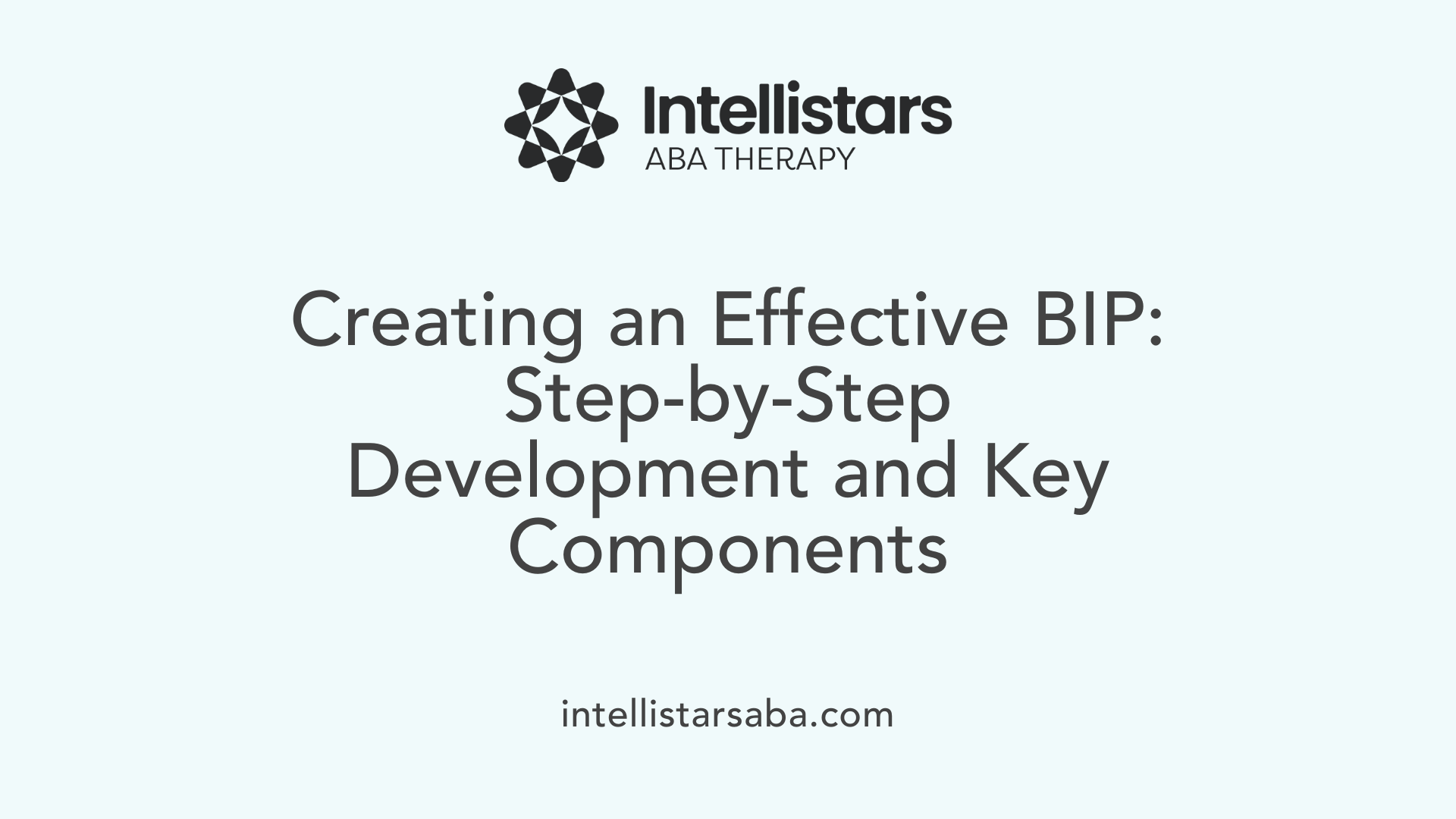
What is the process of developing a Behavior Intervention Plan?
Creating a Behavior Intervention Plan (BIP) is a systematic process that begins with understanding the child's specific behaviors and their underlying reasons. The first step involves conducting a Functional Behavioral Assessment (FBA), which helps identify why the child is exhibiting certain behaviors. This assessment includes observing the child, gathering information from parents, teachers, and other staff, and analyzing environmental factors that might influence behavior.
Once the FBA is complete, trained professionals such as psychologists, behavior analysts, or school specialists select interventions rooted in evidence-based practices. These interventions are tailored to address the functions of the behavior—whether it is for sensory stimulation, escape, attention, or access to preferred items. Strategies include modifying antecedents (triggers or cues before the behavior), reinforcing positive replacement behaviors, and establishing consequential strategies to reduce problematic behaviors.
The BIP then clearly outlines SMART goals—specific, measurable, attainable, realistic, and time-bound—that guide progress and provide targets for improvement. It incorporates proactive strategies to prevent undesirable behaviors and reactive responses for when behaviors occur, such as calm-down techniques or appropriate cues. The plan must be understandable, collaborative, and include methods for collecting data to track changes over time.
Regular review and updates are vital. As new data are gathered, the BIP can be adjusted to better meet the child's evolving needs and ensure that interventions remain effective. This dynamic process promotes positive behavior change by focusing on teaching appropriate alternatives and supporting the child's success in various environments.
Legal Rights and Best Practices in BIP Implementation
What are the legal rights and best practices related to BIPs?
Legal protections for students with disabilities are outlined in federal laws such as the Individuals with Disabilities Education Act (IDEA) and Section 504 of the Rehabilitation Act. These laws affirm that students with disabilities are entitled to appropriate behavioral supports, which include the development and implementation of Behavior Intervention Plans (BIPs).
Under these regulations, BIPs must be tailored to the individual needs of each student and based on a comprehensive Functional Behavioral Assessment (FBA). This ensures that interventions target the specific reasons behind a child's challenging behaviors, such as escape, attention-seeking, sensory needs, or access to tangible items.
In practice, developing a BIP involves a team that often includes parents, teachers, school psychologists, and other specialists. This collaboration guarantees that strategies are individualized and consistent across settings. Schools are required to document the BIP as part of the student's IEP when behavior results in significant disruptions, and any disciplinary actions related to behavior must align with legal standards to prevent violations of the child's rights.
Best practices for implementing BIPs emphasize regular data collection on behavior, progress review, and plan adjustments. This ongoing evaluation helps ensure the effectiveness of interventions and adherence to legal standards. The plan should prioritize positive reinforcement, environmental supports, and skill development over punishment.
Furthermore, schools must ensure due process by obtaining informed parental consent before implementing the BIP. Parents have the right to review, participate in decision-making, and request independent evaluations if disagreements arise.
Compliance with these legal requirements not only safeguards the rights of students but also promotes ethical and effective behavioral support strategies. Continuous stakeholder involvement and professional training are vital in upholding both legal protections and the goal of fostering meaningful behavioral change.
Parents' Role in Advocating and Supporting BIPs
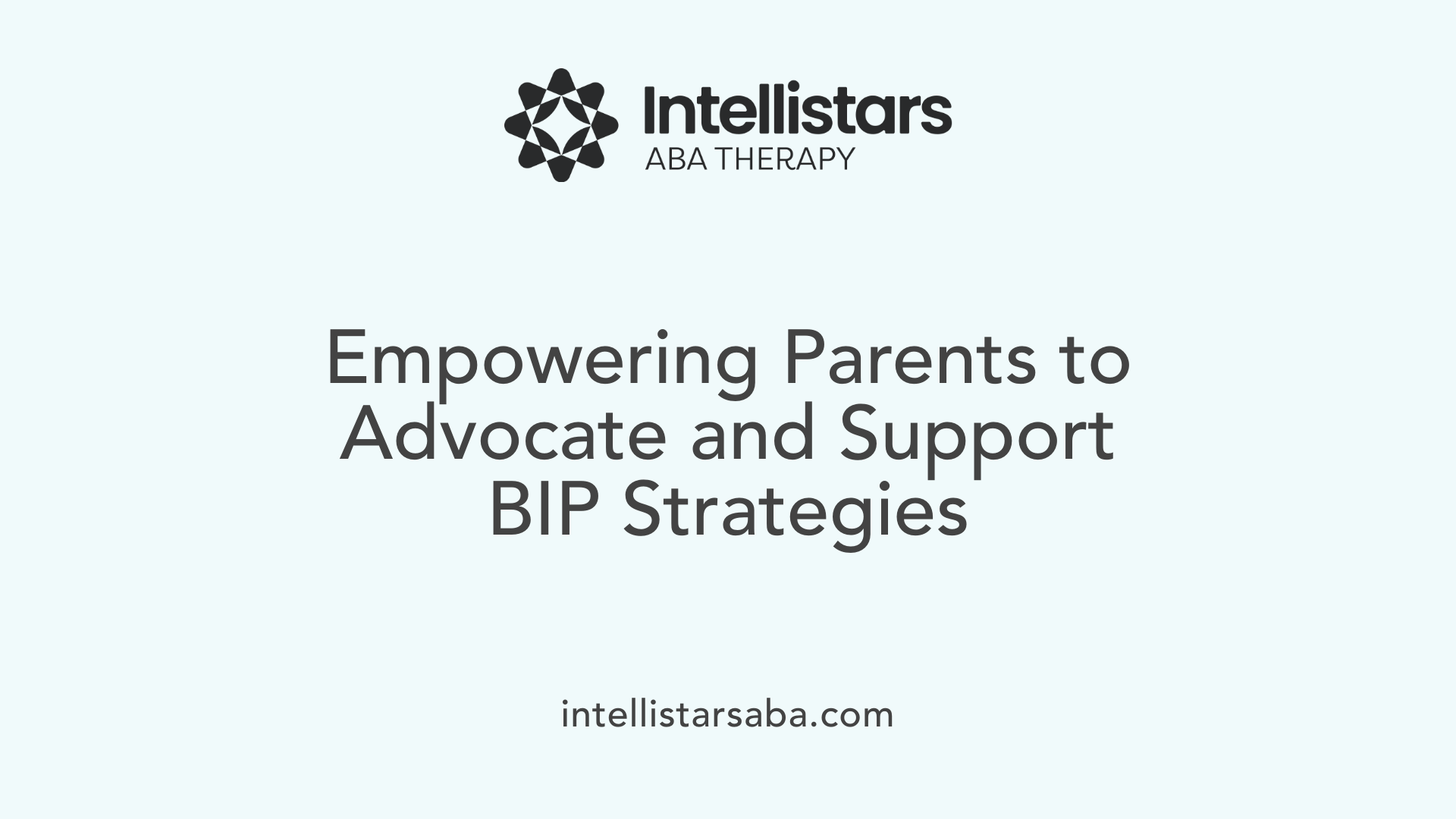
How can parents advocate for effective Behavior Intervention Plans for their children?
Parents play a vital role in ensuring their child's BIP is effective and tailored to their needs. To do this, they should first educate themselves about the process and their child's rights, including understanding what an FBA and BIP entail. Numerous reputable resources, training modules, and webinars are available online to help parents learn about the principles of positive behavior support and how to evaluate a BIP.
Active collaboration with teachers, school psychologists, and other qualified professionals is essential. Parents are encouraged to participate in meetings, ask questions, and review all assessments and the proposed strategies. Ensuring that the plan is individualized, based on thorough functional analysis, and emphasizes positive reinforcement and skill building rather than punishment is critical.
Parents can also suggest functional or developmentally appropriate replacement behaviors that support their child's growth. Advocating for strength-based goals that respect the child's interests and needs can make interventions more meaningful and effective.
Ongoing communication with educators and specialists helps monitor progress and adapt strategies as needed. By requesting regular updates and data on behavior, parents can stay informed and advocate effectively for adjustments when necessary.
Persistent advocacy rooted in a good understanding of evidence-based practices empowers parents to work actively towards interventions that support their child's development, safety, and overall well-being. Building strong partnerships with school personnel ensures that the plan remains responsive and aligned with the child's evolving needs.
The Critical Role of Caregivers in BIP Implementation
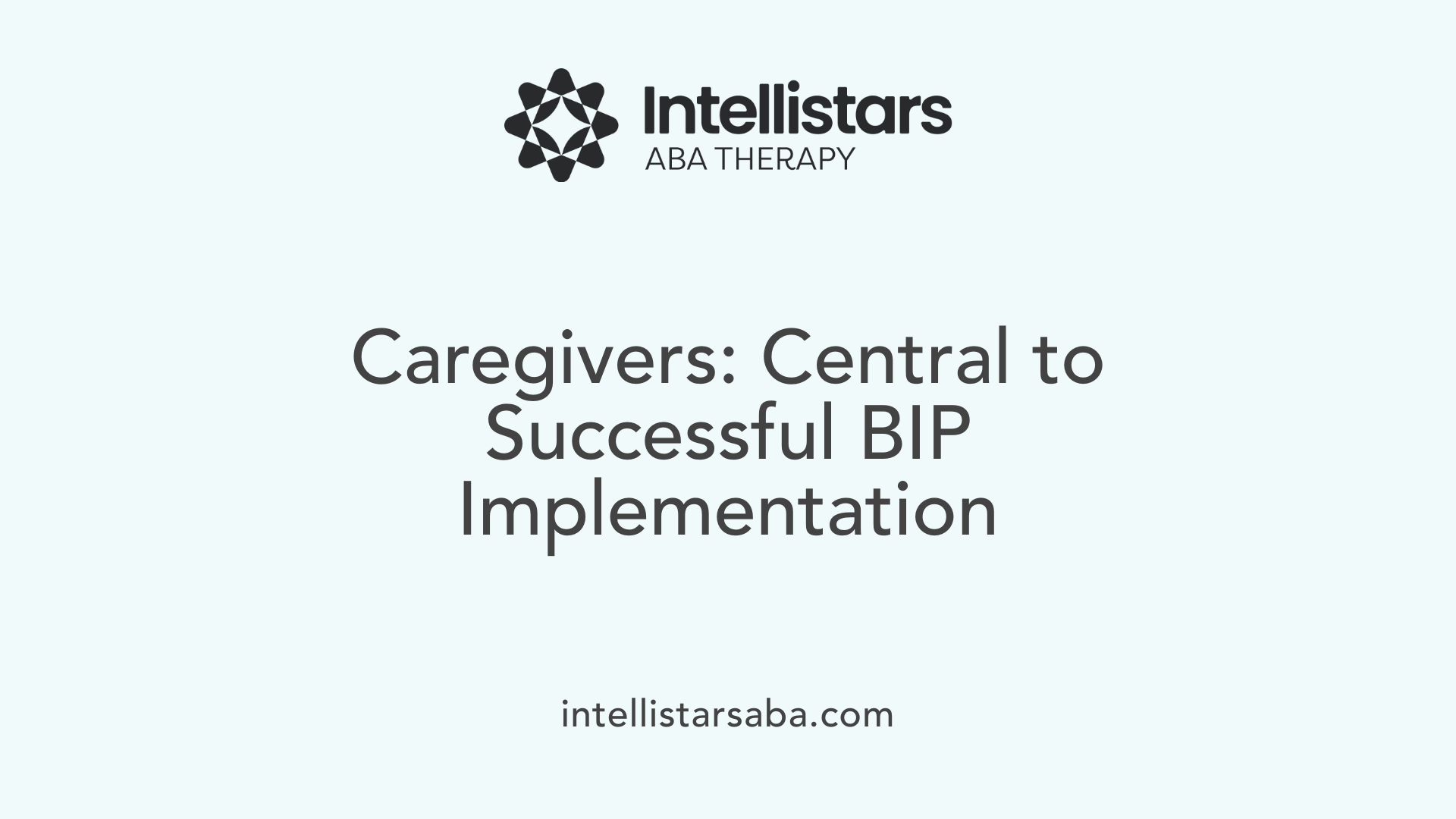
Caregiver involvement in assessment
Caregivers, especially parents, are pivotal in the initial stages of creating a behavior intervention plan (BIP). Their insights into the child’s behavior across different environments help professionals conduct a thorough functional behavioral assessment (FBA). This assessment determines the purpose or function of the behaviors, such as seeking attention or escape from tasks. As key team members, caregivers share valuable information about what triggers behaviors and what strategies have been effective at home, which guides the development of tailored BIPs.
Training and consistency
Once the BIP is in place, training caregivers is essential for successful implementation. Behavioral skills training provides them with the knowledge and techniques needed to apply strategies consistently. This training often includes modeling, role-playing, and providing feedback to ensure caregivers understand how to reinforce positive behaviors and manage challenging ones effectively. Consistency is crucial because it helps children learn new behaviors and generalize skills across different settings.
Monitoring and collaboration
Regular observation and data collection by caregivers enable ongoing monitoring of the child's progress. Sharing this information with the school team through meetings keeps everyone aligned and allows timely adjustments to the BIP. Collaboration between parents, teachers, and behavior analysts fosters a supportive environment and ensures that interventions are responsive to the child's changing needs. Furthermore, ongoing communication helps reinforce skills outside of therapy sessions and promotes consistency across all environments.
By actively participating in assessment, receiving proper training, maintaining consistency, and engaging in regular collaboration, caregivers greatly enhance the effectiveness of BIPs. Their involvement not only supports the child's behavior change but also encourages skill development, leading to positive long-term outcomes.
How BIPs Effectively Support Behavioral Change and Child Development
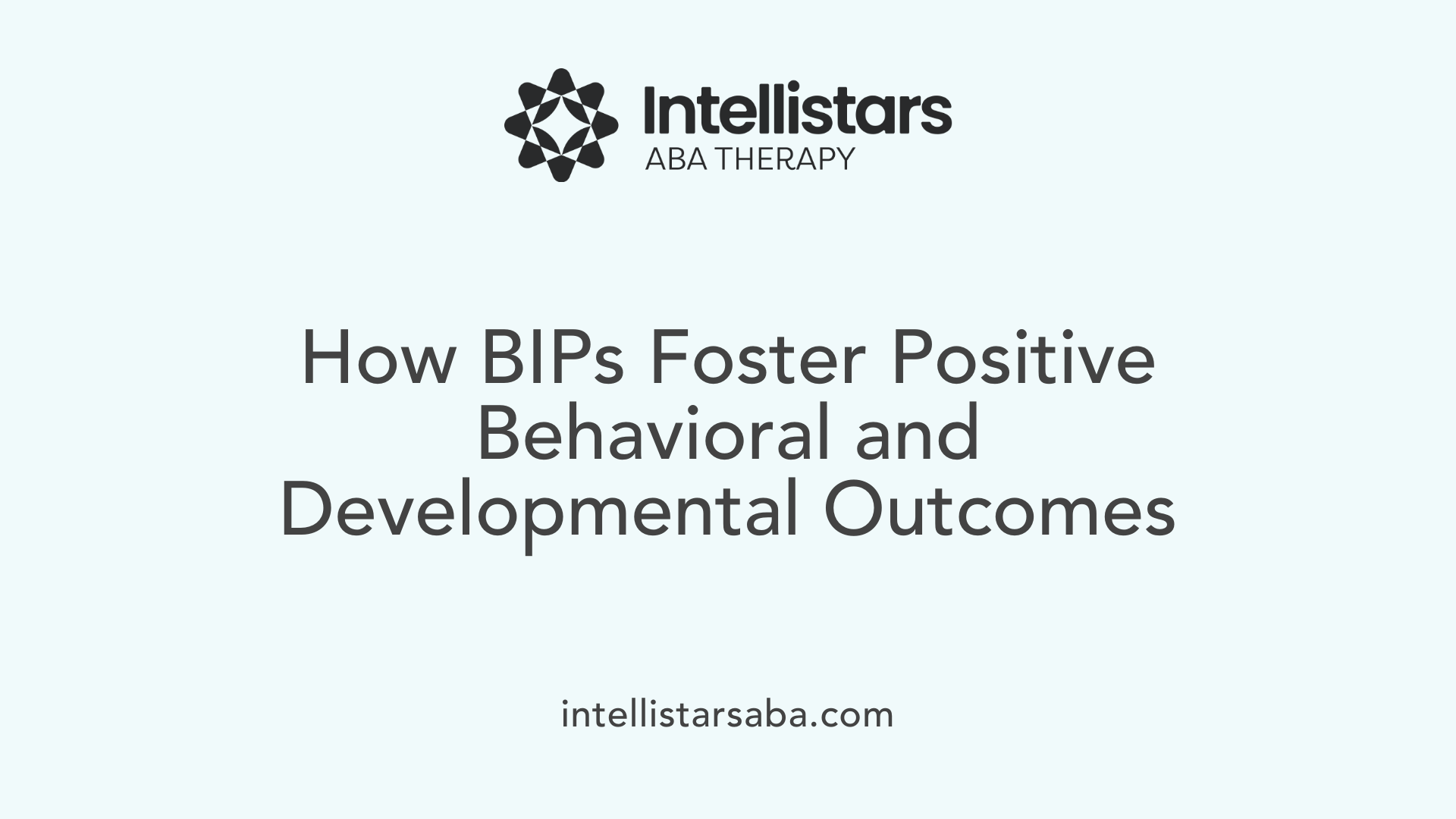
How do Behavior Intervention Plans help in modifying children's behaviors?
Behavior Intervention Plans (BIPs) serve as personalized blueprints that guide the way adults support children with challenging behaviors. These plans are crafted based on a thorough functional behavioral assessment (FBA), which helps identify the reasons behind specific behaviors, such as seeking sensory stimulation, escaping difficult tasks, gaining attention, or accessing preferred items.
A well-designed BIP includes targeted strategies to address these functions, incorporating positive reinforcement, skill-building, environmental adjustments, and replacement behaviors. For example, instead of reacting negatively to a child's tantrum, the plan might teach calming techniques or alternative ways to express needs. Consistency in applying these strategies across settings—home, school, and community—is essential for success.
The implementation of a BIP hinges on staff training and buy-in. When teachers, aides, and parents understand and accept the plan, they are more likely to adhere to it faithfully. This consistency ensures that the child receives clear messages and predictable responses, which are crucial for behavioral change.
Ongoing data collection and regular progress reviews allow caregivers and professionals to monitor whether the strategies are effective. Adjustments can be made to better meet the child's evolving needs, leading to reductions in problematic behaviors and an increase in positive, adaptive skills.
Overall, BIPs are powerful tools that foster meaningful behavioral improvements and support healthy social and emotional development. By addressing the root causes of behaviors and applying evidence-based strategies consistently, they help children learn appropriate ways to meet their needs, leading to more positive interactions and a better quality of life.
Empowering Parents for a Brighter Future
Understanding what goes into a Behavior Intervention Plan, how it's developed, and the vital role you play as a parent can significantly enhance your child's learning experience. By actively participating in planning, advocating for personalized supports, and collaborating with professionals, you can help ensure that interventions are effective, ethical, and tailored to your child's unique needs. With informed involvement and consistent support, parents can empower their children to develop positive behaviors, build essential skills, and achieve greater independence and happiness. Remember, your role is crucial in turning a well-crafted BIP into a success story for your child's future.
References
- What Is a Behavior Intervention Plan? - Child Mind Institute
- [PDF] Behavior Intervention Plan Guide for Parents | Iowa IDEA Information
- What is a behavior intervention plan? - Understood.org
- Behavior Assessment, Plans, and Positive Supports
- Behavior Intervention Plans and Schools | Navigate Life Texas
- 10 Behavior Intervention Strategies for Young Students
- When should parents be included in the implementation of a ...
- [PDF] Behavior Intervention Plans (BIPs) - A Resource Document for Parents
- About Behavioral Intervention Plans (BIPs) - Child Mind Institute






